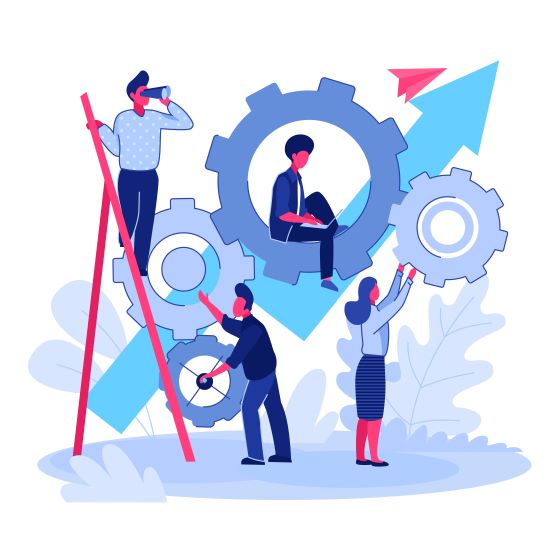The Project
It is expected that electric vehicles (EVs) will contribute to 75% of new cars registered in Europe by 2030, backed by major markets’ internal combustion car phase-out regulations. At the same time, the manufacturing of EVs produces 80% higher CO2e emission compared to ICE cars. EV production is the main emitting phase in the life cycle, simultaneously the one with the highest reduction potential. Design for Circularity (DfC) strategies have arisen and across the entire value chain technologies are being developed to decrease the environmental impact of EV manufacturing. However, the heterogeneity of the value chain between different designs of EV models causes ambiguous Life Cycle Analysis (LCA) results, which are often not translatable between cases. Also, it is often difficult to determine the most effective DfC strategy due to the lack of a widely accepted methodology that offers ready-to-use solutions. Furthermore, IPR-related issues between OEMs and manufacturers are impeding the interchangeability of technologies and knowledge.
ZEvRA will enable the collaboration of five big OEMs, supported by top European universities and key players from all facets of the value chain (and three 2ZERO partnership members) and will demonstrate a harmonized circularity methodology that allows for interchangeability and replicability throughout Europe. The methodology and manufacturing technologies will be supported by digital tools and validated on a full circular car, integrating 8 prototype components covering 84% of the total automotive material mix.
ZEvRA’s innovations aim to improve zero emission approaches in the life cycle and value chain of at least 59% of European EVs by 2035. The Škoda Enyaq will be used as a baseline for the development of new technologies in this project.
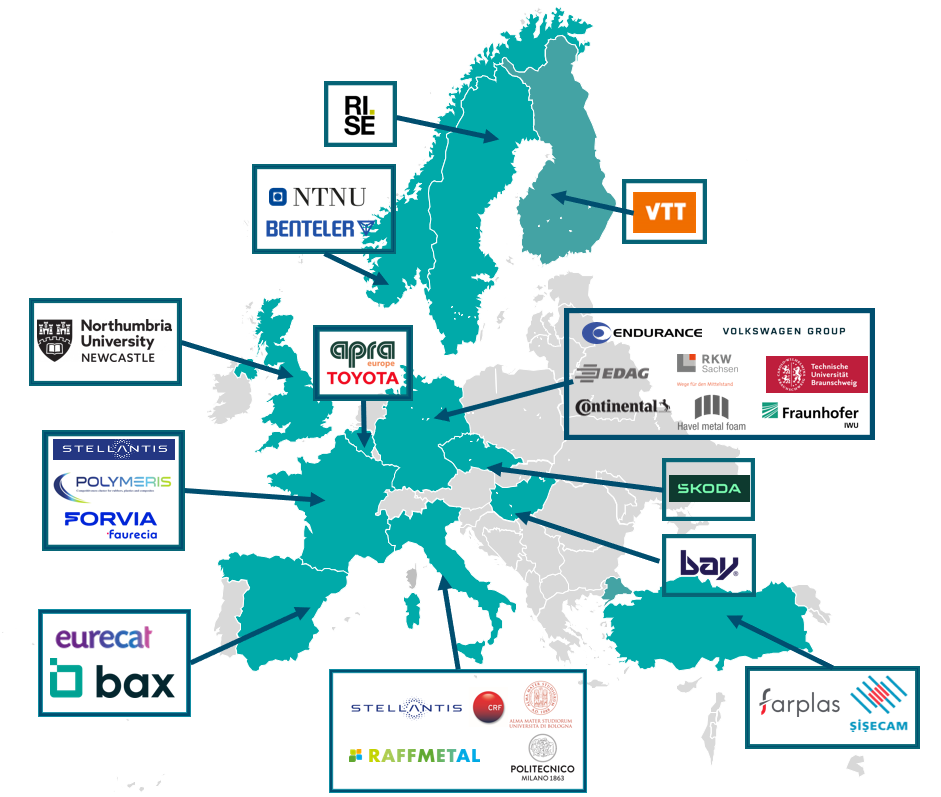
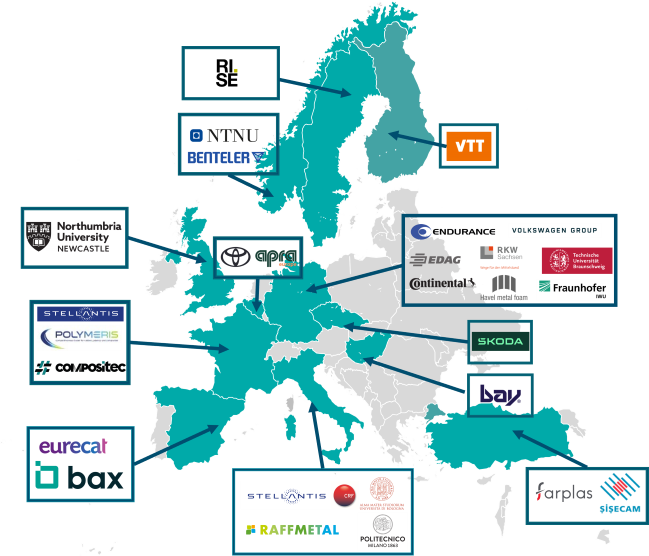
Major Impacts
Objectives
- 9-Rs-based Design for Circularity methodology
- Validation with 8 zero-emission use cases
- Circular car aiming at 0% virgin material
- Increase of human capital, awareness & acceptability
- Adaptation of circular car models
Outcomes
- Harmonised way of measuring circularity
- Increasing circularity, circular design approaches: Reuse, recycling & CRM recovery
- Circular car prototype test bench ready
- Increased skills, awareness & acceptability
- Improved markets of secondary raw materials
Impacts
- Clean road transport challange
- World leadership
- Innovative demonstration
- Use acceptability, improved air quality, more circular economy
Work Packages
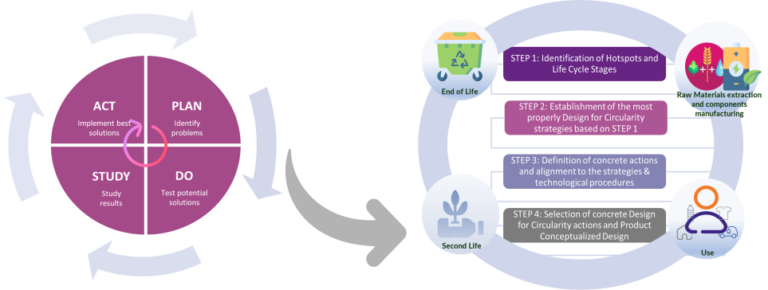
1
Circular economy methodology
Work Package 1 (WP1) focuses on performing and optimizing the Design for Cicrularity (DfC) methodology and deploying Life Cycle Thinking (LCT) to assess the best DfC strategies and concept designs for each use case in WP4. Led by Eurecat, WP1 goal is to establish a comprehensive circularity framework, including an iterative Design for Circularity methodology and a harmonized circularity assessment methodology that will allow the optimization of the circular car prototype through Digital Tools and the circular design of the use case components through the Circular car prototype. The activities also include conducting full LCA led by Bay Zoltan Alkalmazott Kutatasi Kozhasznu Nonprofit KFT (BZN), LCC led by University of Northumbria at Newcastle (UNN), and SLCA led by Eurecat on the proposed use cases
Design for Circularity Methodology: Under Eurecat’s leadership, an iterative circular design approach built upon the Plan-Do-Study-Act framework. Through training and interactive workshops, stakeholders are expected to exchange ideas, provide feedback, and assist in the definition and alignment of the DfC strategies and specific actions.
Harmonized Circularity Assessment Methodology: Led by Eurecat, a system for assessing circularity through LCT will be developed. Assessment will include measurements such as water circularity, % recycled material input, and % material recovery potential, % critical material. Whole LCA, LCC, and SLCA results will be integrated into the assessment by BZN, UNN and EUT respectively.
Life Cycle Assessment: Under the guidance of BZN, a LCA (ISO 14044/14040) of the benchmark vehicle and the required sensitivity analyses on the changing parameters defined previously will be performed, to obtain the environmental impacts of the overall process and each relevant category.
Life Cycle Costing: Under the guidance of UNN, the LCC will cover costs related to investments, manufacturing, installation, operation, and maintenance, following the ISO 15686-5, the ILCD Handbook, and the SETAC recommendations for LCC.
Social Life Cycle Assessment: Under the guidance of Eurecat, surveys or interviews will be conducted for relevant stakeholders, covering the life cycle stages of the EV from production to recycling. Individual social aspects, such as individual mobility, job creation, and contribution to health and well-being, will also be revealed
Digitalization of the Life Cycle Thinking assessment including the 9Rs, will be executed in WP2, including Life Cycle Assessment, Life Cycle Costing and Social Life Cycle Assessment. The circularity assessment methodology will also contribute to standardization.
2
Digital tools
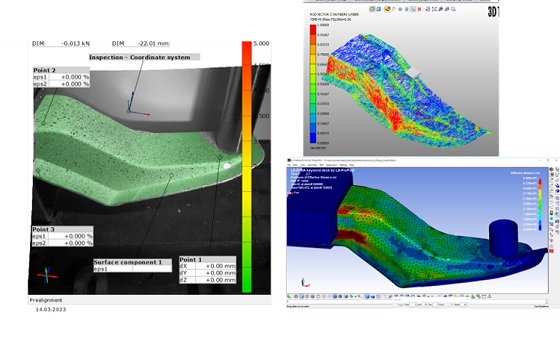
The aim of the digital tools Work Package is to develop and adapt a set of digital tools for the Life cycle thinking and design for circularity methodology developed in the first part of the project, the circular business model and the use cases.
The digital tool work package is made up of five task with this end. Three of these tasks will be working on the tools for supporting specific materials: Steel, plastics and composites and aluminium. The third task will support circularity by design and the final task, support the tracking of the material and components used.
More specifically, task 1 will work on using AI to reduce the simulation time of head injury crash simulation, allowing different repurposed steel solution to be used effectively.
Task 2 will create virtual twins of plastic and composite parts, that take into account the effects of process on the materials and allow the effectiveness of different material combinations to be compared. Investigated will be long fibre mats with recycled plastics, discontinuous fibre mats with recycled thermoplastics, biobased fibre mats as well as injection moulded solutions with recycled thermoplastics.
Task 3 will develop micromechanical models to simulate the extrusion and casting of secondary aluminium. These simulations will be verified and used to optimize the component tool’s geometry and processing parameters to maximize the alloy’s performance. This will in turn allow the creation of a virtual twin of the recycled aluminium user case.
Task 4 is the creation of an automated system that will allow the evaluation of different designs for circularity, supporting the methodology developed in the first part of the project. This system will allow designers to evaluate the impact of material choices and designs on the circularity potential of a component at its design stage. The fifth and final task is to develop and implement a test bench for the digital production passport concept in the automotive value chains of the project. This will be used to demonstrate the benefits of data-enhanced circular process-chains for the ZEvRA components.
3
Circular Car Prototype
EDAG GROUP®
In Work Package 3, a circular vehicle prototype is to be conceptualized, which enables the validation of the methods following the 9R principles and a rethinking of the life cycle.
In the first step, the requirements for a vehicle based on the Škoda Enyaq and those of the OEMs involved are defined. The collection is then combined with the circular idea to select possible design components for the differently defined use cases. These decisions are setting the requirements for prototype production in WP4. The results from WP4 are always compared with the boundary conditions from WP3 in a continuous iteration process based on test results at material and component levels.
The core result of the project, a circular car concept, is being elaborated. Circular here means, that on the one hand new technologies to create products out of end-of-life vehicles are demonstrated and on the other hand a redesign of the entire vehicle using the 9R principles is implemented. A focus is set on the assembly-disassembly thinking during the design processes.
A digital twin will be created to enable virtual testing of the vehicle, including future driving behaviour and identification of possible improvements. All important tests regarding vehicle safety, user experience and design will be tested using the newest contemporary virtual technologies. By this, a virtual demonstrator is set up.
To showcase the benefits of the new design principles and technologies, a real vehicle will be reworked in particular on joints that formerly were not detachable. The full car size demonstrator will be built including all prototypes from WP4 to show the numerous technologies of vehicle circular economy. This demonstrator will be used for defined tests to prove the applicability of the technologies. In addition, a virtual reality solution will be implemented for providing more information and to create a wholistic user experience and understanding of the new circular car design.
4
Use cases – Prototypes
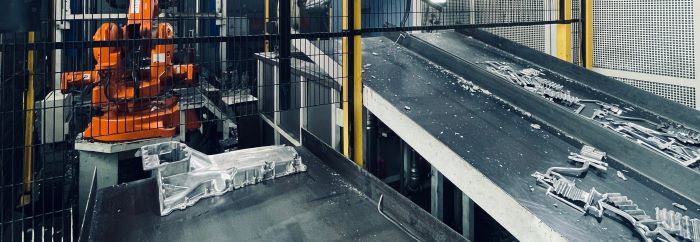
The focus of this Work Package is the prototypical manufacturing of components for the different materials groups according to the requirements and circular design principles. Demonstrator parts are chosen from steel, aluminium (wrought, casting and foamed), plastics, FRP, tyres and glass and substituted by new material approaches aming at 0% virgin material. The investigation will contain the adaption of manufacturing technologies including feedback loop with the digital tools. The physical use case components will be characterized and tested regarding mechanical properties and crashworthiness performance. All material-level results will be virtually integrated prior comparing to our baseline for validating the methodology.
All prototypical demonstrator parts will verify and validate the approaches and present the achieved results.
The main objective of Work Package 5 within the ZEvRA project is to enhance awareness and acceptance of circularity principles significantly. This objective will be achieved by creating a comprehensive virtual learning and educational platform tailored to the industrial workforce. The platform will play a pivotal role in promoting the principles of the circular economy and driving innovation within automotive technology.
As depicted in the Figure, the suggested educational platform will serve as a central hub for delivering targeted training activities to academia and industry professionals. By facilitating interaction and collaboration between these two sectors, the platform will encourage the exchange of knowledge and ideas, ultimately driving advancements in automotive technology and circular economy practices.
The WP5 has a clear vision of establishing sustainable education, training, and awareness initiatives on a European scale. ZEvRA can equip individuals within academia and industry with the knowledge and skills to embrace circular economy practices and integrate them into their work processes through dedicated training activities, educational materials, and engaging and informative content, e.g. lectures, workshops, video nuggets, and industry training seminars. Additionally, sustainable clusters and networks will be established. These clusters and networks will serve as platforms for identifying the specific needs of companies and universities in relation to circular economy training and upskilling programs. By addressing these needs, ZEvRA aims to facilitate the implementation of targeted training initiatives that effectively enhance skills and job placements within the automotive sector.
In summary, WP5 of the ZEvRA project is dedicated to advancing awareness and acceptance of circularity principles through the development of a comprehensive virtual learning platform and targeted training activities. By fostering collaboration between academia and industry and addressing the specific needs of stakeholders, WP5 aims to drive forward innovation in automotive technology while promoting sustainable practices within the circular economy.
5
Awareness Acceptability Training

6
Dissemination
Communication
Exploitation
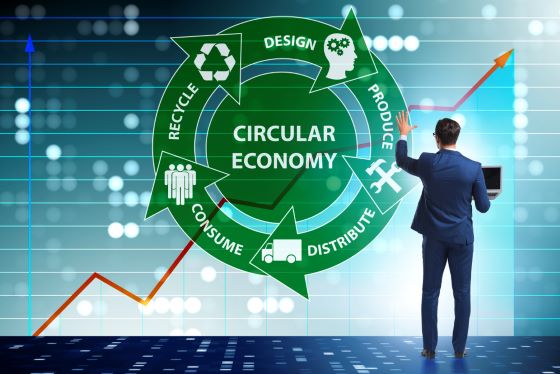
Work Package 6 focuses on broadening the impact of project outcomes beyond the consortium through effective communication, dissemination, and exploitation strategies. Led by Bax & Company, WP6 will ensure that the innovative solutions developed within ZEvRA reach a wide audience and contribute to advancing circular economy practices in the automotive sector.
Communication and Dissemination Strategy: Under the guidance of Fraunhofer IWU, WP6 implements a comprehensive communication and dissemination plan to convey ZEvRA’s results to diverse stakeholder groups. This includes designing communication materials, identifying target audiences, and utilizing various channels such as social media, scientific conferences, and workshops to disseminate project achievements. The goal is to enhance visibility and promote societal acceptance of circular economy practices in automotive manufacturing.
Exploitation of Innovations and Circular Business Models: Under guidance of Bax & Company, WP6, the market impact of ZEvRA’s innovations and circular business models (CBMs) will be maximized. Routes to market will be identified for key project outcomes, collaborating with partners to develop exploitation plans, and promoting the adoption of CBMs to advance circularity in the automotive industry. Project innovations will be aligned with market requirements, and business plans for sustainable and circular innovations will be developed. Special attention will be given to the development of EoL routes for automotive material. Secondary available sources for plastics, TP and glass will be sought and used to increase their availability in the DigiPrime platform to 50 t. Also, an observatory study mapping out the current logistics streams of EoL plastics and FRP in the EU will be executed.
Market and Policy Observatory: In WP6, external developments and policy landscapes related to end-of-life (EoL) plastics and composites will be monitored. Through analysis and recommendations, WP6 identifies opportunities for EU-tailored circular economy solutions and promotes alignment with relevant networks and international standards. By fostering collaboration and knowledge exchange, we will maximize the global impact of ZEvRA’s circularity strategy and contribute to sustainable automotive practices worldwide. A special focus will be set on design for easy assembly & disassembly.
ZEvRA project management ensures that the project is carefully monitored and that its steps align with the project’s main objectives. The team uses available resources, guarantees faultless execution and accurate financial and technical reporting, and meets deadlines.
The multi-level structure of our consortium encompasses exploitation, innovation management, technical, financial, and other levels. We modify our tactics to meet the various demands of our stakeholders and guarantee their participation and practical cooperation. Expert project organizing committees assist us in handling the intricacies of project dynamics and ensure that all stakeholders’ opinions are heard.
Skilled quality and risk management, founded on years of experience in the European project business, guarantees early risk identification, corrective action implementation, and appropriate quality standard establishment. Research data management (RDM) for the project will handle concerns about ethics, confidentiality, privacy, and intellectual property protection that might emerge from generated datasets. This covers the EHS and RRI components. Some datasets may be subject to embargo periods or not be published due to the Data Management Plan (DMP), which will specify how data is generated, collected, and published.
We guarantee that innovation is fostered and safeguarded throughout the project lifecycle by implementing meticulous procedures and superior legal, financial, and contractual frameworks. Our proactive approach creates an atmosphere favourable to innovation and makes the idea-to-realization process go more smoothly. Using the entire range of innovation potential found during the ideation stage, our all-encompassing method guarantees that no chance for advancement is overlooked. Every development milestone and scientific discovery is meticulously recorded, safeguarded, and ready to be incorporated into our project framework. In addition to preserving knowledge, the objective is to advance society and produce measurable outcomes. Knowledge holders from industry and research are invited to join our External Stakeholder Board, and external stakeholders are also involved.
7
Project management and coordination
